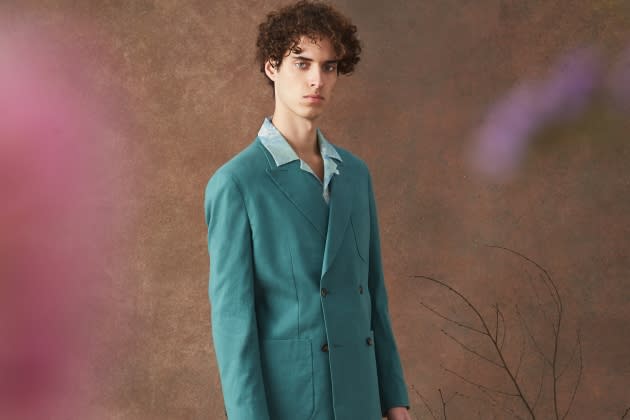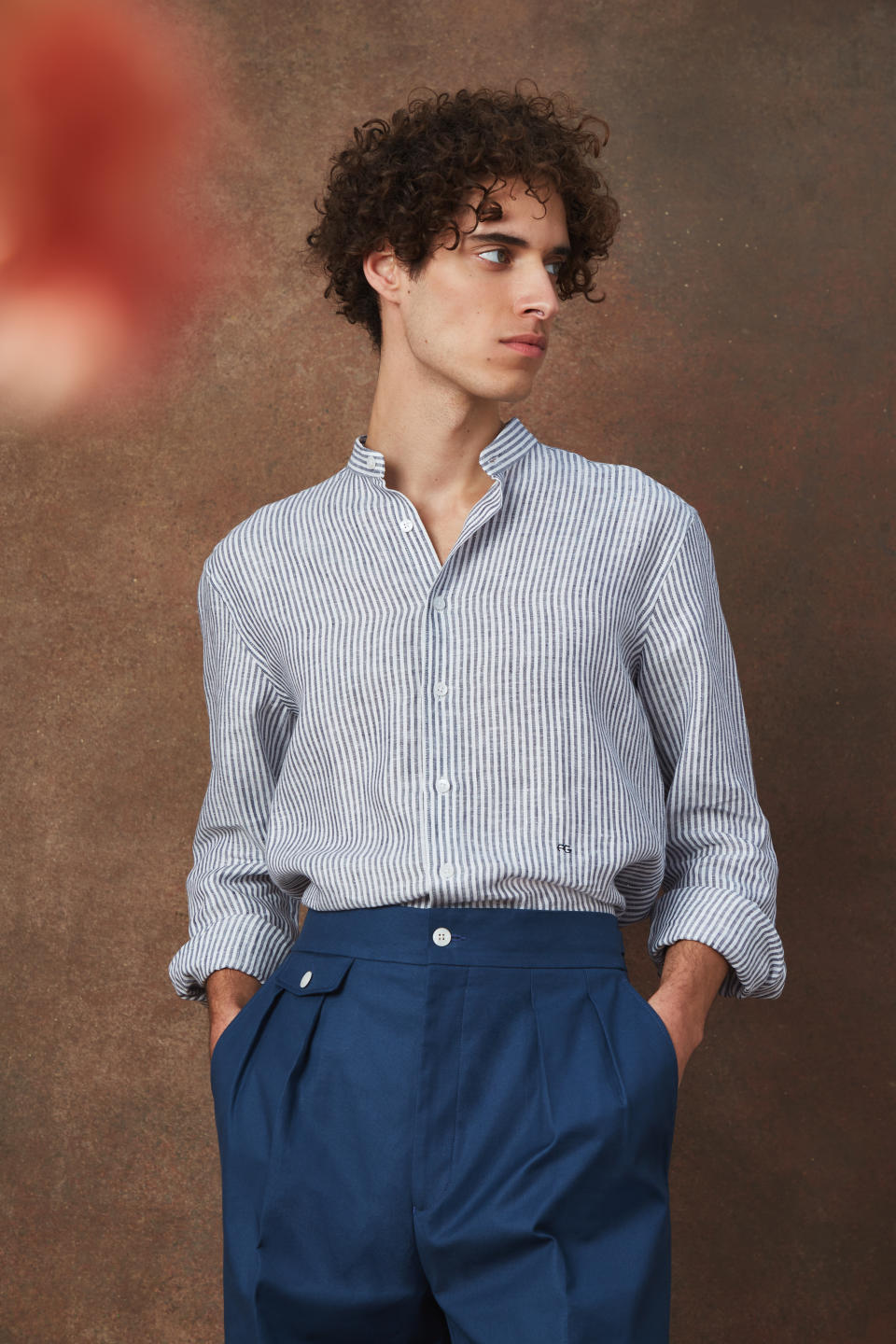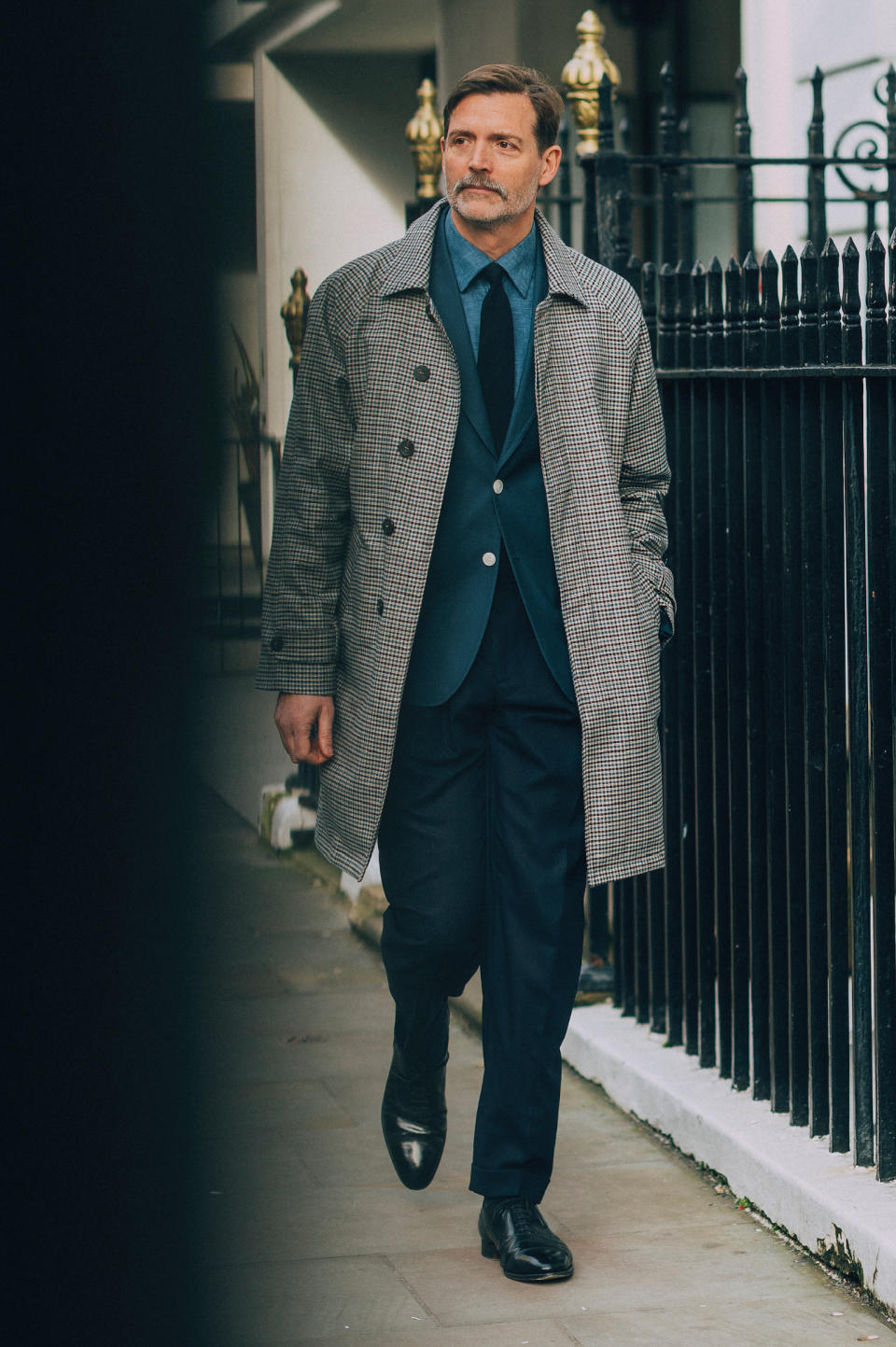British Menswear Is Having a Peacock Moment, Says Patrick Grant

LONDON — Make way for the peacock parade.
Serial entrepreneur, menswear designer and social campaigner Patrick Grant sees British men embracing vibrant color and pattern once again, dressing with joy and abandon on weekends and for special occasions, rather than at the office.
More from WWD
“British menswear, and especially tailored menswear, is having a really fantastic moment. Look at Grace Wales Bonner and Steven Stokey-Daley [of S.S. Daley]. They’re being very playful, and very original, with the tailoring silhouette,” said Grant in a telephone interview before zipping to Scotland to scout a new clothing factory.
“It feels a bit like the Peacock Revolution with that playful, anything-goes spirit of the early ’70s, which was a reaction to the very slim, strict 1960s aesthetic,” he added.
“All of a sudden young men are discovering they can wear suits that are really flamboyant — and nobody bats an eyelid,” he said, pointing to Daniel Craig in his pink velvet suit on the red carpet in 2021, and the bold colors worn by Conor McGregor, the Irish mixed martial artist.
“McGregor is a real icon for a lot of athletic guys, and he wears these incredibly flamboyant clothes,” said Grant.

The peacock aesthetic doesn’t apply to office wear. Grant believes the men who are wearing jeans, chinos and shirts to the office are choosing to show their colors on weekends, or at special events such as weddings.
“Jackets are very much for dressing up, and we see them buying individual jackets with interesting colors and patterns. The majority of men just want to blend in, but I think they’re doing it in a much more colorful and exciting way,” said Grant.
Grant owns the Savile Row tailor Norton & Sons and the ready-to-wear line E. Tautz. He also founded Community Clothing, a collection of season-less basics that are made in the U.K. He started that collection to ensure that factory workers were employed all year round.
He’s all for the new peacock revolution.
This week he launched a colorful, flower-filled new tailoring line with the British fashion retailer Frasers, formerly House of Fraser.
Called Patrick Grant Studio, it has a contemporary, rather than heritage, aesthetic and a sustainable angle, too. He’s using fabric from some of the oldest mills in England, while all of the production is done in Europe.
The clothing is made with organic cotton and there are no virgin synthetic fibers in the mix.
It is made under license by Threadology, Frasers Group’s tailoring partner, and the inaugural spring 2023 collection is inspired by the flora and fauna of the English garden.

Grant said the shapes draw on some of the E. Tautz rtw, with drapey coats and soft, tailored shapes. Those clothes hang alongside the sort of clothing Grant’s father was wearing in the ’70s, as well as Grant’s own duds from the late ’80s and early ‘90s.
The color palette takes in cream, brown, green, navy, burnt orange, yellow and pink. Prices range from 99 pounds for a breezy striped linen shirt with a round collar to 349 pounds for a check topcoat. A palm green linen jacket with a South American, feet-in-the-sand feel costs 298 pounds.
Grant said the team at Frasers approached him about moving away from his heritage leanings into a more contemporary realm. “It was a nice opportunity, and they were very open-minded about how the clothing could look,” he said.
He’s moving forward on other fronts, too, continuing to cheerlead for U.K. manufacturing and sustainability, and hoping to slow the speed of the fashion cycle.
Just a few years ago, at the start of lockdown in 2020, Grant was among the first entrepreneurs to snap into action, transforming his Lancashire clothing factory into a PPE hub, creating elasticated, drawstring trousers and boxy tops with lots of pockets for hospital workers at Britain’s National Health Service.
Pre-COVID-19, that factory made between 250 and 300 garments a week, for E. Tautz and other premium British brands. At the start of COVID-19 it was making in excess of 1,600.
“It brings home the value of the skilled manufacturing business. We have systematically undervalued these people for 20, 30 years and considered manufacturing to be a second-class job for far too long in this country. The chickens are coming home to roost,” he told WWD at the time.

Grant hasn’t given up that campaign.
He said that at Norton & Sons and Community Clothing — which sit at opposite ends of the price scale — “it’s about making clothes that are repairable and wearable for a very long period of time. Also, it’s about making people think more carefully when they buy clothing. They need to value the clothing as an object, to value the materials and the people who made it.”
Grant is also pushing for changes to the way apprenticeships are run in the U.K., trying to convince the U.K. government to increase the pay for apprentices in the garment industry so they’re not swayed by better salaries at supermarkets or shops.
“There’s a real shortage of skilled labor in the U.K. and we need to sell the idea of these careers to young people. In our own factory, I reckon we could employ at least twice as many people as we have now, and we still wouldn’t be able to keep up with the demand. We’re having to turn down so much work.”
He said that all the employers in the clothing sector “would be absolutely over the moon to be training more people,” but it’s very difficult to find people because of the way the apprenticeships are structured.
For Grant, revolutions come in all shapes and sizes. Whether there’s a pandemic, a cost-of-living crisis or a shortage of skills, he’s always battling for change.
Best of WWD

